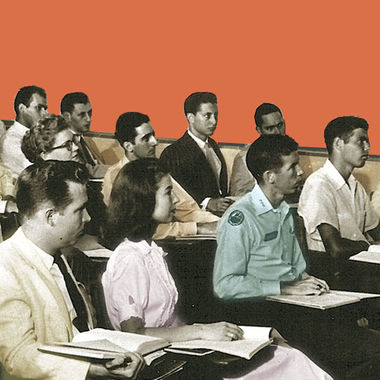Mon Sep 02 2019 · 8 min read
The Fourth Industrial Revolution: Challenges in the Labor Market and Education

By Ani Avetisyan
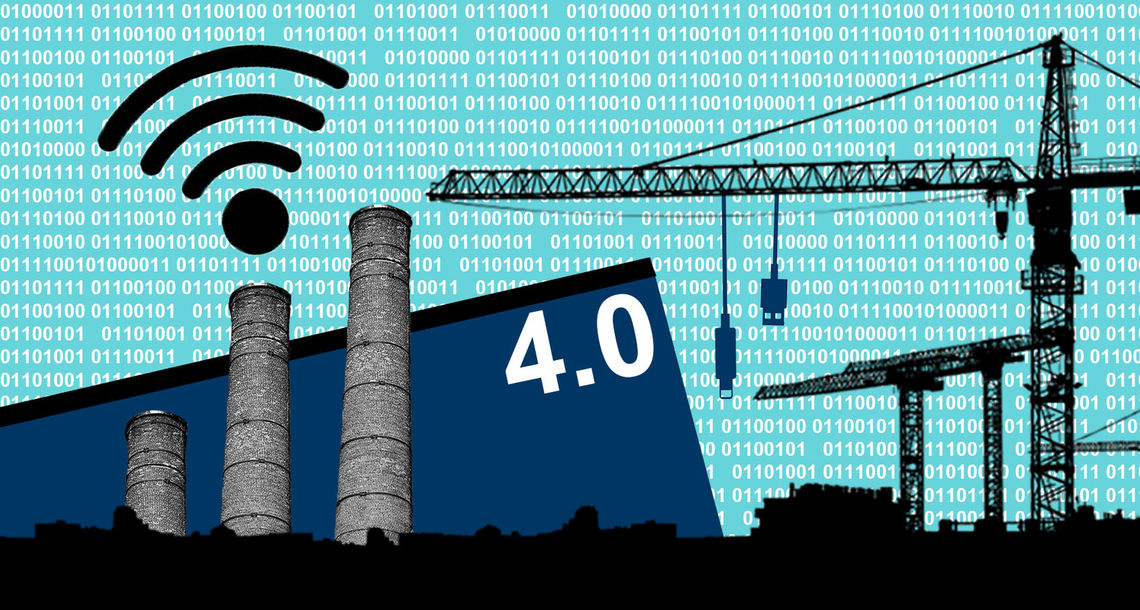
The Fourth Industrial Revolution, also known as Industry 4.0, is what founder and executive chairman of the World Economic Forum Klaus Schwab calls the socio-economic development trends taking place in the world today. Experts believe that the Revolution humanity is witnessing today fundamentally differs from its predecessors.
The First Industrial Revolution took place at the end of the 18th century, with the spread of steam power and the new machines it made possible, which greatly reduced the workforce necessary to complete what was once labor-intensive work. The Second Industrial Revolution (generally dated between 1870 up to the beginning of the First World War) took place almost 100 years later as electricity (much of it generated through steam power) accelerated mass production even further with new innovations, technological processes and communication methods, like the telegraph. The Bessemer process - the first method discovered for the mass production of steel - was one of the most important factors in the success of the Second Industrial Revolution. A hundred years later, the world witnessed the Third Industrial Revolution (1969) that was driven by electronics and information technology, eventually giving us the Internet. Now, the Fourth Industrial Revolution is already fusing the physical, biological and digital worlds to create a new environment for production, employment, consumerism, communication and, in general, for life. It is built on the unprecedented level of connectedness that 5G communication technology will bring, the massive amounts of automatically-generated data produced by billions of “smart” devices, and new advances in machine learning and artificial intelligence that allow coordination between them all without human intervention. Notably, the time gap between these revolutions has contracted from 100 to only 40 years between paradigm shifts.
What are the Main Characteristics of the Fourth Industrial Revolution?
Global trends in digitization and automation are going to significantly transform manufacturing processes by reducing costs and increasing production value: imagine 3D printers building houses on their own, with self-driving vehicles providing them with the necessary raw materials. It is believed that this unprecedented development will lead to a great increase in productivity and, essentially, will improve living standards. However, taking into consideration the existing differences in socio-economic development in different countries, it’s probable that these trends will play out in different intensities in different parts of the world. Those countries where the digitization process is developing faster and digital solutions are more accessible to their citizens will be the ones that benefit the most from these new trends.
However, the Fourth Industrial Revolution can also have negative consequences, mainly within labor markets. It will be the same problem that took place during the First Industrial Revolution - the replacement of vast sectors of the human labor force with machines or, in today’s case, digital technologies. This can lead to more inequality in income and general well-being. The Boston Consulting Group predicts that, by 2025, the global labor market will go through a very disruptive transformation. Digitization will form new relationships within markets, creating new types of demand. To realize the demands of the modern consumer, there is already a need for experts who can create products based on digital technologies, specialists who can provide services for those technologies and experts that can create and ensure the development of new technologies. This new reality creates a challenge that today’s education systems will need to adapt to address.
As the time gap between these revolutions has been reduced from 100 years to 40 years, trends in technological development have sharply increased. However, the length of formal education has remained unchanged for years. Today’s higher education usually takes 4-6 years to complete and is falling behind global development, taking into account how fast the latter is taking place. There is a new threat of a rise in structural unemployment because specialists coming out of higher education systems will need to continuously update their skills in order to remain relevant in the labor market as short as six years after graduating. The world’s new development agenda is challenging not only the duration of formal education but its capacity and composition as well. To ensure competitiveness in the labor market, it’s necessary to make education more flexible by allowing it to adapt to labor market demands. However, digitization trends can have positive effects as well in this sector - new technologies have made individual and lifelong education accessible and cost-effective for wide swaths of the population.
What are the Most Current In-Demand Jobs?
LinkedIn published a list of the most promising jobs for 2019 based on job opening announcements and skills that are in demand (listed from least to the most amount of job opening announcements). This list shows trends in how demand is changing in the global labor market. Another list published by LinkedIn of expected skillsets is also changing. The most in-demand skills are those that Artificial Intelligence (AI) will not be able to replace such as creativity, collaboration/teamwork, time management, people management, etc. Additionally, skills in working with new technologies are also high in demand, for example, cloud computing, AI, UX Design, etc.
Forbes magazine also published a list of high-demand jobs based on a report issued by the U.S. Bureau of Labor Statistics, along with a list of jobs that will eventually lose demand. It’s noteworthy that this list of in-demand jobs is significantly different than a previously published list by the World Economic Forum of in-demand and most respected professions. The latter includes professions such as doctors, lawyers, engineers, school principals, police, nurses, accountants, management consultants, and teachers.
Is Armenia Prepared for These Global Trends?
This new agenda in world development demands new requirements in education and labor markets. Moving forward, in order to remain competitive, a country has to embark on creating, developing and implementing innovation while focusing, more than ever, on the development of a knowledge-based economy and pushing research and development (R&D) forward. It is also necessary to create a relevant educational environment.
When taking a look at what specialties and disciplines students are studying in Armenia's educational institutions, it becomes abundantly clear that the professions of the future are not big on the list (see graph 1, 2, and 3).
Graph 1. Number of students in preliminary (vocational) educational institutions based on groups of specialties for the 2017-2018 academic year.
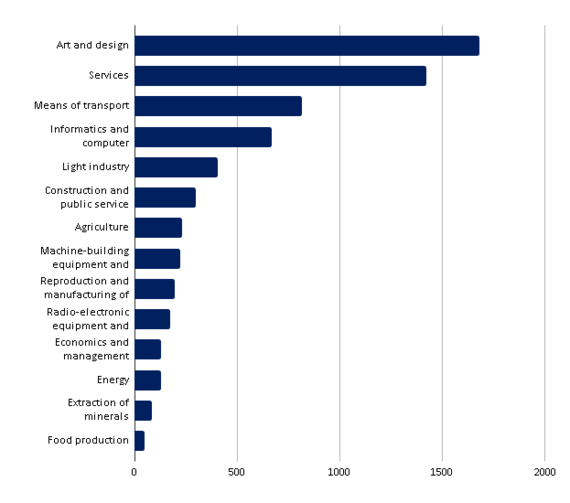
Graph 2. Number of students in secondary vocational educational institutions based on groups of specialties for the 2017-2018 academic year.
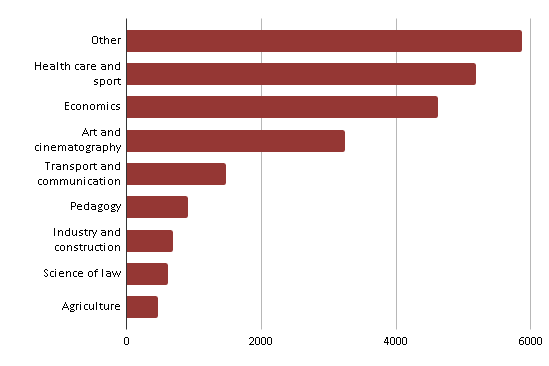
Graph 3. Number of students in higher educational institutions based on groups of specialties for the 2017-2018 academic year.

Taking into account how long it takes to receive a university degree, it is safe to assume that, in the medium term, these specialties will not be expanding within the education system. By the time the right experts graduate university, at least 4-6 years will pass. According to the Statistical Committee of Armenia, the distribution of employees based on economic groups also attests to the lack of future experts. Is Armenia competitive enough to ensure the demand for new experts? The answer can be found in the Competitiveness Global Report 2018 published by the Global Economic Forum. The report introduces the Competitiveness Global Index which is based on 12 pillars of competitiveness. The pillar on ICT adoption includes the number of Internet users - the percent of the population that uses the Internet no matter where they are, how they use it and why. As of 2018, Armenia’s index is 64.3 percent, ranking it 61st on the list of the world’s countries. Hence, the majority of the population has access to digital platforms in all versions. However, Armenia’s competitiveness is lagging due to its low ranking within the pillar on skills (see graph 4).
Graph 4. Indicators for Skills in the Global Competitiveness Index.
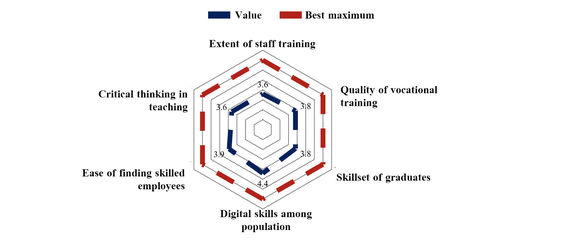
-
Extent of staff training – Calculated based on the weighted average of the associated answers to the following question: “In your country, to what extent do companies invest in training and employee development?” [1 = not at all; 7 = to a great extent]
-
Quality of vocational training – Calculated based on the weighted average of the associated answers to the following question: “In your country, how do you assess the quality of vocational training?” [1 = extremely poor among the worst in the world; 7 = excellent among the best in the world]
-
Skillset of graduates – Calculated based on the weighted average of the associated answers to the following two Executive Opinion Survey questions: “In your country, to what extent do graduating students from secondary education possess the skills needed by businesses?” and “In your country, to what extent do graduating students from university possess the skills needed by businesses?” In each case, the answer ranges from 1 (not at all) to 7 (to a great extent)
-
Digital skills among active population – Calculated based on the weighted average of the associated answers to the following question: “In your country, to what extent does the active population possess sufficient digital skills (e.g. computer skills, basic coding, digital reading)?” [1 = not all; 7 = to a great extent]
-
Ease of finding skilled employees – Calculated based on the weighted average of the associated answers to the following question: “In your country, to what extent can companies find people with the skills required to fill their vacancies?” [1 = not at all; 7 = to a great extent]
-
Critical thinking in teaching – Calculated based on the weighted average of the associated answers to the following question: “In your country, how do you assess the style of teaching?” [1 = frontal, teacher based, and focused on memorizing; 7 = encourages creative and critical individual thinking]
The indicator within the skills pillar is an important requirement to combat the challenges of the Fourth Industrial Revolution. Statistical data show that to ensure competitiveness in this new reality, it is necessary to improve connections within the education-skills-business paradigm. In regards to the pillar on innovation capability, data on Armenia indicate that there is a need to improve the innovation sector. Hence, to develop and be competitive in global development trends, the country has to promote and support innovation to create digital solutions and be able to implement them. It also has to create an educational environment that will ensure flexibility and rich content so future experts can learn skills relevant to modern trends.
The Fourth Industrial Revolution and how it fundamentally differs from the microprocessor-era is that before, humans needed to learn to work with new technologies. Today, those technologies will operate mostly autonomously - that is, they won’t even require a human to program them, but will learn to do so themselves. It may not be possible for Armenia’s or any other country’s labor market to successfully adapt to these changes at the speed they are expected to take place. The questions of how resources will be distributed and how conflicts over different ideas on how to do so will be resolved remain the greatest challenges for contemporary society.
related:
The Challenges of National Educational Assessments in Armenia
By Hayk Daveyan
While Armenia has participated in several international comparative educational assessments, and has designed national assessment tools, neither have been implemented properly. Today, more than ever, there is a great need to properly analyze existing data that can inform educational policy making and curriculum development.
Araratian Baccalaureate: Transforming the Future or Creating Selective Education?
By Lusine Sargsyan
The Araratian Baccalaureate, a public-private partnership between the Armenian Government and Ayb Education Foundation launched under the previous administration, came under the spotlight when Education Minister Arayik Harutyunyan questioned the need for “elite” schools and the financial efficacy of the program.
Independence Generation: Education, Societal Aspirations and Implications for Development
By Narek Manukyan
This commentary by Narek Manukyan touches upon some of the key findings about education in a study commissioned by the Friedrich-Ebert-Stiftung called, "Independence Generation - Youth Study 2016." It takes an in-depth look at societal aspirations and how they impact youth within the context of education.
How to Transform High-Tech Education in Armenia
By Artashes Vardanyan
Education has the immense power to impact industries and the economy. Artashes Vardanyan writes about the need to transform the educational system to meet the needs of one particularly promising sector of Armenia's economy, the High-Tech industry.
Placing Armenia on the Global Tech Map
By Tatev Mkrtumyan
Armenia’s Information and Communication Technologies sector has been steadily growing over the past decade. Tatev Mkrtumyan focuses on three spheres that will impact Armenian hi-tech industries and place it on the global tech map.
Armenia’s Tech Sector
By Sassoon Grigorian
Sassoon Grigorian writes that Armenians are noted problem solvers, world leaders in the strategy game of chess and have the ability to be a world leader in a technology niche.
Tech in Armenia: Dawn of a New Era?
By Raffi Kassarjian
Many observers believe that current trends in the global IT market are creating new opportunities for growth and relevance for Armenian tech companies. If the industry at large – as well as government and educational institutions – react quickly and earnestly to these trends, Armenia has an opportunity to capture an inordinate share of the new value being created as a result of these trends.



